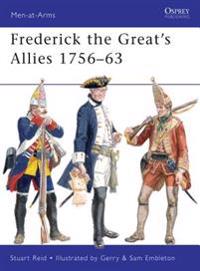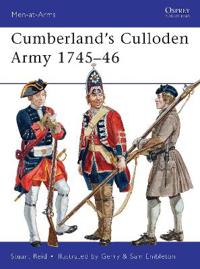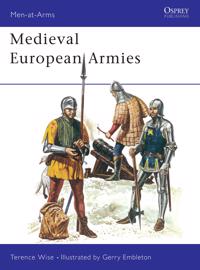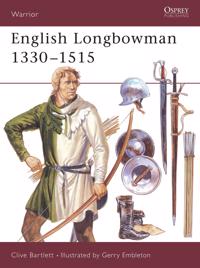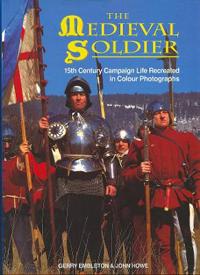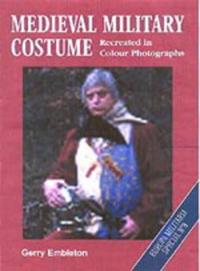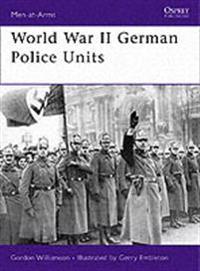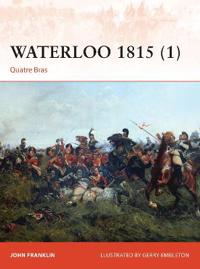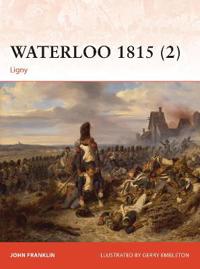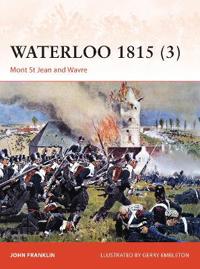Frederick the Great's Allies 1756-63 (Pocket)
avStuart Reid, Gerry Embleton, Sam Embleton
ISBN: 9781849081771 - UTGIVEN: 201009The Seven Years' War in Germany was characterised by an increasing use of 'light' troops in conjunction with regular infantry and cavalry as part of an ongoing evolution in military tactics. This book draws attention to these tactical developments and also provides an analysis of the allied army tha[...]
Cumberland's Culloden Army 1745-46 (Pocket)
avStuart Reid, Gerry Embleton, Sam Embleton
ISBN: 9781849088466 - UTGIVEN: 201210In August 1745 Charles Edward Stuart, the 'Young Pretender', landed in Scotland and sparked the Second Jacobite Rising. The Jacobite forces seized Perth, then Edinburgh, where they proclaimed the Young Pretender's father King James VIII; they trounced their Hanoverian opponents at Prestonpans and cr[...]
Mediaeval European Armies (Häftad)
avTerence Wise, Gerry Embleton
ISBN: 9780850452457 - UTGIVEN: 198704Almost continual warfare raged in Europe during the period 1300-1500. These wars were the furnaces in which many of the modern European nations were forged. Parallel with this emergence of the nations came the development of national armies to protect the newly-won borders and independence, yet thro[...]
Auldearn 1645 (Häftad)
avStuart Reid, Gerry Embleton
ISBN: 9781841766799 - UTGIVEN: 2003-05Scotland in the 17th century was an independent country whose king was the King of England. Charles' proposed remodelling of the Scottish Kirk succeeded in alienating the Protestant population. In 1638 a National Covenant was signed throughout the country, opposing the King's reforms. In 1639 and 16[...]
English Longbowman 1330-1515Ad (Pocket)
avClive Bartlett, Gerry Embleton, Clive Bartlett
ISBN: 9781855324916 - UTGIVEN: 199503The English military ascendancy which lasted from the mid-14th to the early 16th century was founded upon defensive tactics based on the use of the longbow. This weapon, distinctive in that it was used by English forces alone, was probably the most effective missile weapon of the Late Middle Ages: i[...]
The Medieval Soldier (Inbunden)
avGerry Embleton, John Howe
ISBN: 9781859150368 - UTGIVEN: 199805In a dazzling series of some 270 specially posed photographs, the authors recreate the fighting men of the High Middle Ages set in their 15th century environment. Noblemen and armoured knights, officers and halbardiers, artillery and handgunners, archers and crossbowmen, ladies and camp-followers ar[...]
Medieval Military Costume (Häftad)
avGerry Embleton
ISBN: 9781861263711 - UTGIVEN: 200011Reenactors wearing carefully created costumes, photographed in authentic settings, provide a snapshot of spear men, archers, crossbow men, gunners, and knights from the period 1300-1500. Detailed photographs are supported by artwork showing scores of original images from period paintings, carvings a[...]
World War II German Police Units (Pocket)
avG. A. Embleton, Gerry (ILT) Embleton, G. A. Embleton
ISBN: 9781846030680 - UTGIVEN: 2006-09The wartime Police were headed by Himmler as chief of the SS; and throughout the occupied nations the regional SS commanders were specifically termed 'Higher SS and Police Leaders'. It was not a single service, but a vast machinery which included many special categories - from conventional criminal [...]
Waterloo 1815 (1) (Pocket)
avJohn Franklin, Gerry (ILT) Embleton, John Franklin
ISBN: 9781472803634 - UTGIVEN: 2014-11To commemorate the 2015 bicentenary of the Battle of Waterloo, one of the defining campaigns in European History, Osprey is replacing its single volume Campaign title covering the whole of the battle with three highly detailed volumes. Based on new research drawn from unpublished first-hand accounts[...]
Waterloo 1815 (2) (Pocket)
avJohn Franklin, Gerry (ILT) Embleton, John Franklin
ISBN: 9781472803665 - UTGIVEN: 2015-02This title represents the second instalment of the captivating study of the Waterloo campaign, one of the defining events in European history. In particular it focuses on the desperate struggle for Ligny, which saw the Prussians pushed back by the French Army after heavy fighting in what was to be N[...]
Waterloo 1815 (3) (Pocket)
avJohn Franklin, Gerry (ILT) Embleton, John Franklin
ISBN: 9781472804129 - UTGIVEN: 2015-06Waterloo is one of the defining campaigns of European history. The name conjures up images of the terrible scale and grandeur of the Napoleonic Wars and the incredible combined effort that finally ended Napoleon's aspirations of power in Europe. Drawn from unpublished first-hand accounts, and using [...]

